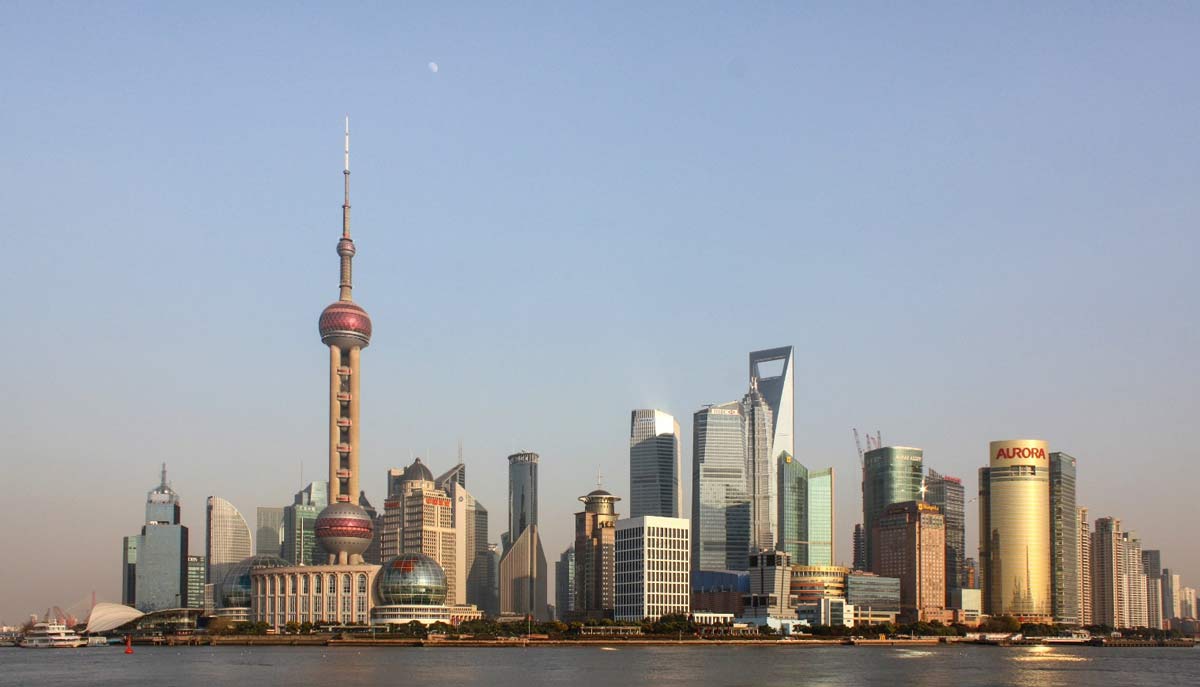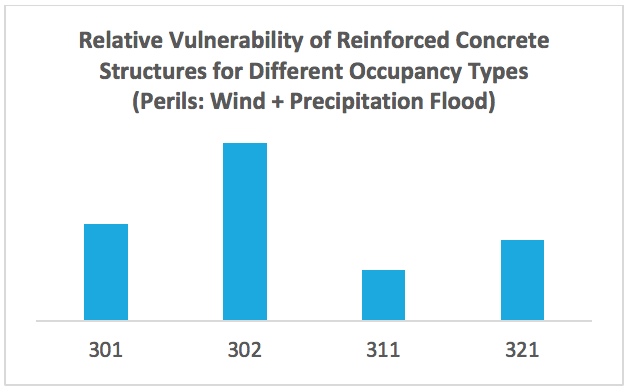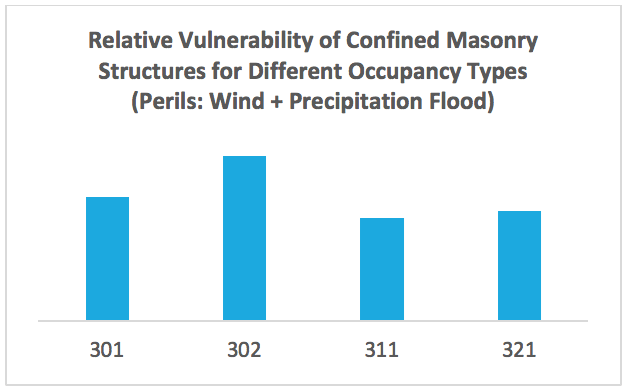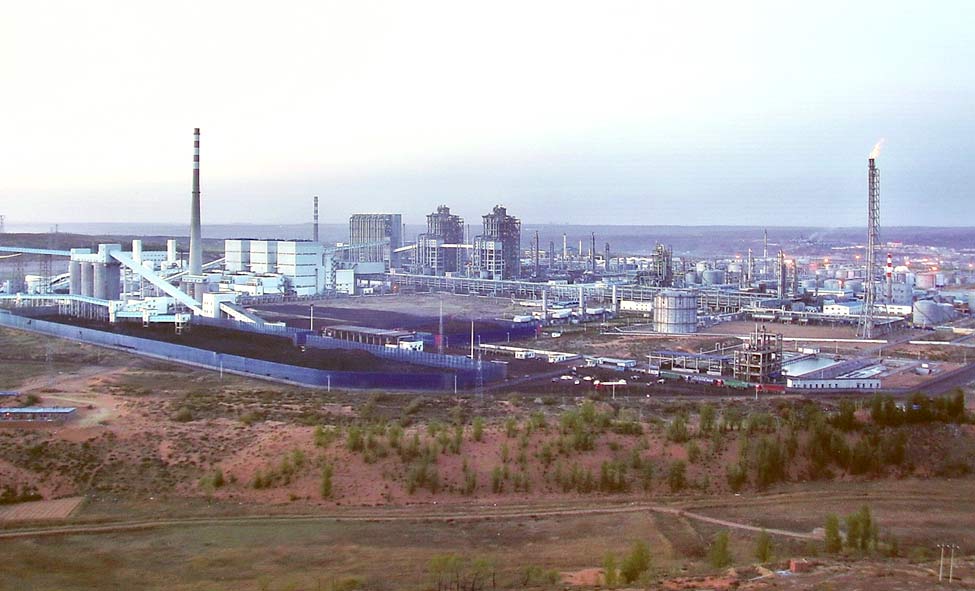
China's economy has developed significantly in recent years, and this has been reflected in a construction boom. According to Forbes, for example, a record-breaking total of 144 new buildings 200+ meters (660 feet) tall were completed around the world in 2017; more than half (76) were in China. As of this date, China dominates the Council on Tall Buildings and Urban Habitat (CTBUH)’s 100 tallest completed buildings with a total of 49—five of which are among the top 10. Buildings this tall are categorized as “megatall” by the CTBUH. Like many of China’s large cities nowadays, Shanghai has seen tremendous development over the last 30 years and now features many tall buildings (Figure 1). According to CTBUH, “tall” is a relative term; in addition to low- and medium-rise buildings, AIR Typhoon Model for China supports high rise buildings of 8+ floors.

Along with China’s rapid economic development, the insurance industry has experienced significant exposure growth in residential and commercial lines, as well as a sharp rise in industry, infrastructure, and other property lines, which are also reflected in the growth of premium in the property market (Table 1).
| Property Insurance Companies Premium Income in millions (CNY) | |||
|---|---|---|---|
| Company | Year 2006 | Year 2016 | Growth 2016/2006 |
| PICC P&C | 71,394 | 310,453 | 435% |
| CPIC Property | 18,123 | 96,071 | 530% |
| PingAn Property | 16,862 | 177,997 | 1060% |
| CCIC Property | 6,328 | 31,958 | 510% |
| Taiping Property | 2,052 | 18,180 | 890% |
| Sunshine P&C | 1,751 | 28,469 | 1630% |
| China GDP in millions (CNY) | |||
| Year 2006 | Year 2016 | Growth 2016/2006 | |
| GDP | 21,943,850 | 74,358,500 | 340% |
Exposure is growing in quality as well as quantity. Throughout China new buildings are incorporating advanced features in their design and are also subject to better construction practices and stricter code enforcement. This is particularly true of new high-rise buildings, which are generally made of reinforced concrete and are built to strict code regulations. As a result, reinforced concrete has become the dominant construction type.
While some dilapidated buildings are being demolished and replaced with new construction, other older structures are being reinforced during renovation to improve their quality. For example, there were 1,770,000 square meters of housing being upgraded between 2007 and 2011 in Hangzhou, Zhejiang Province, and there are still many urban development projects ongoing in Hangzhou.
Updated AIR Typhoon Model for China
Due largely to its location and the length of its coastline, China is prone to tropical cyclone impacts—either direct hits or close bypasses. Slower, weaker storms can impact a region over a longer period, producing flooding that can last for days or even weeks. Therefore, typhoon damage has always been one of the major concerns of China's insurance industry. Because of the significant changes in building values, construction quality, building codes, and industry exposure distributions by occupancy AIR has updated the vulnerability functions of the Typhoon Model for China.
Wind and precipitation-induced flood damage functions, for example, have been adjusted based on the latest research, engineering analyses of different types of buildings subjected to external loads, and claims data (as described in a previous blog). The damage functions were modified to account for labor and material costs, building construction practices, and claims adjustment practices. In general, the new damage functions have lower mean damage ratio (MDR) values for low intensities, and higher MDR values for high intensities than those from the previous model. The inflection point’s intensity varies according to the occupancy/construction/height combination.
The update also enhances differentiation in wind and precipitation-induced flood damage functions. For example, Occupancy 301(General residential) and 302(Single Family), Occupancy 311(General Commercial) and 321(General Industrial) now have different wind and precipitation-induced flood vulnerability curves (Figure 2). During the process of adjusting wind and flood relative vulnerability by occupancy and construction, we used appropriate relative vulnerability relationships from our Japan and Southeast Asian models, given the lack of China-specific data and theoretical research.


As mentioned earlier, large industrial facilities are becoming more widespread in China. They are composed of many types of structures, such as stacks, cooling towers, pipes, and tanks. These industrial facility components have different vulnerabilities when subjected to wind and water loads. Thus, in this update, the conventional construction and occupancy combinations supported will be expanded and new classes of construction and occupancy codes, including marine categories such as marine hull and marine cargo, and more than 70 infrastructure categories such as bridges, tunnels, and railways, are supported. The updated model also supports more than 60 large industrial facility types, such as large chemical plants (Figure 3).

The AIR Typhoon Model for Mainland China captures the effects of tropical storm and typhoon winds and precipitation-induced flooding on insured properties in China. This is a stochastic, event-based model designed for portfolio risk management. (Re)insurers need a robust model to assess and manage their risk from typhoon winds and rain.
To learn more about the AIR Typhoon Model for Mainland China, read the brochure



